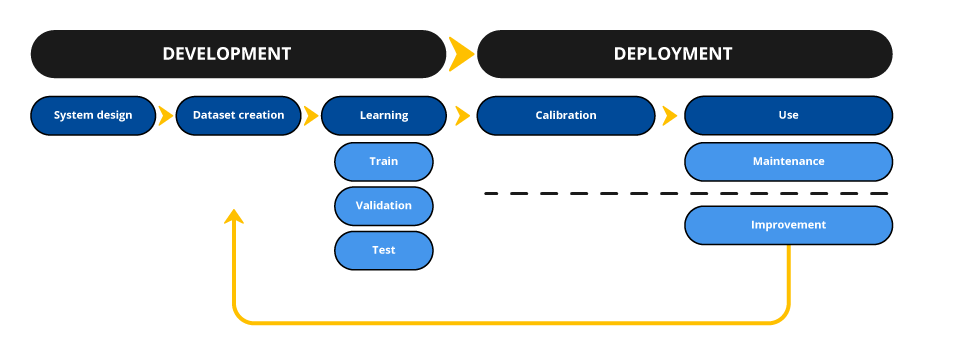Regulations on the protection of personal data
The how-to sheets concern, in particular, use cases relating to the phase of development of an AI system (scientific research, research and development, personalisation of a commercial product, improvement of the public service provided to the user, etc.) for which the GDPR is applicable.
Reminder on the scope of the GDPR
The GDPR applies to any organisation:
- public and private, regardless of size (company, administration, community, association, etc.);
- who processes personal data, on its behalf or not;
- established in the territory of the European Union where the processing is carried out in the course of the activities of one of its establishments in the territory of the Union, irrespective of whether or not the processing takes place in the Union;
- or who, not established in the territory of the European Union, directly targets natural persons in the European Union or monitors their behaviour.
Examples:
- Application of the GDPR to the re-use of datasets created outside the EU: the GDPR is applicable to the re-use of datasets by a controller or processor established in the European Union where the processing is carried out in the context of the activities of one of its establishments in the territory of the Union, even if those databases have been set up outside the EU and contain the personal data of persons outside the EU. In this case, the controller is therefore obliged to comply with the applicable data protection regulations.
- Application of the GDPR to the reuse of models trained outside the EU: the GDPR applies to the use of models created outside the European Union by a controller or processor established within the European Union where they contain personal data and the processing is carried out in the context of the activities of one of its establishments in the territory of the Union.
Data processing in the development phase of the AI system subject to the scope of the Law enforcement directive as well as those relevant to State security and national defense are therefore excluded from the scope of these how-to sheets. However, the recommendations provided can serve as inspiration.
Other applicable regulations
If these how-to sheets are intended to clarify how the development of AI systems can comply with personal data protection obligations, other regulations, which are not addressed directly, may apply. This is, for example, the case of rules on intellectual property law or the regulation on data governance (DGA), which regulates data intermediation services or data altruism.
Others are not yet applicable. This is particularly the case with the proposal for a European AI regulation which aims to frame the development and deployment of AI systems within the European Union.
Finally, sector-specific regulations apply to AI systems developed or deployed for certain applications subject to specific regulation (health, finance, critical systems, etc.). It is up to each controller to determine the applicable regulations and to turn to the relevant regulators.
Interplay between the how-to sheets and the EU AI Act
The European AI Act distinguishes several categories of systems according to their level of risk with regard to product safety and fundamental rights: prohibited systems, high-risk systems, systems requiring transparency guarantees and minimum risk systems. It thus provides for different degrees of obligations based mainly on AI system providers.
CNIL’s how-to sheets have been drawn up with a view to an intelligible interplay with these future obligations (e.g. in terms of qualification of actors and risk assessment).
It should be noted, however, that these how-to sheets apply, under constant law, to any processing of data subject to the GDPR in the context of the development of an AI model or system, regardless of the entry into application of the European rules on artificial intelligence. The CNIL also recalls that the AI Act is not intended to replace data protection obligations but to complement them.
The elaboration of more precise rules on the articulation between these different requirements is the subject of European work (within the European data protection board) in which the CNIL actively participates and which will lead to subsequent publications.




